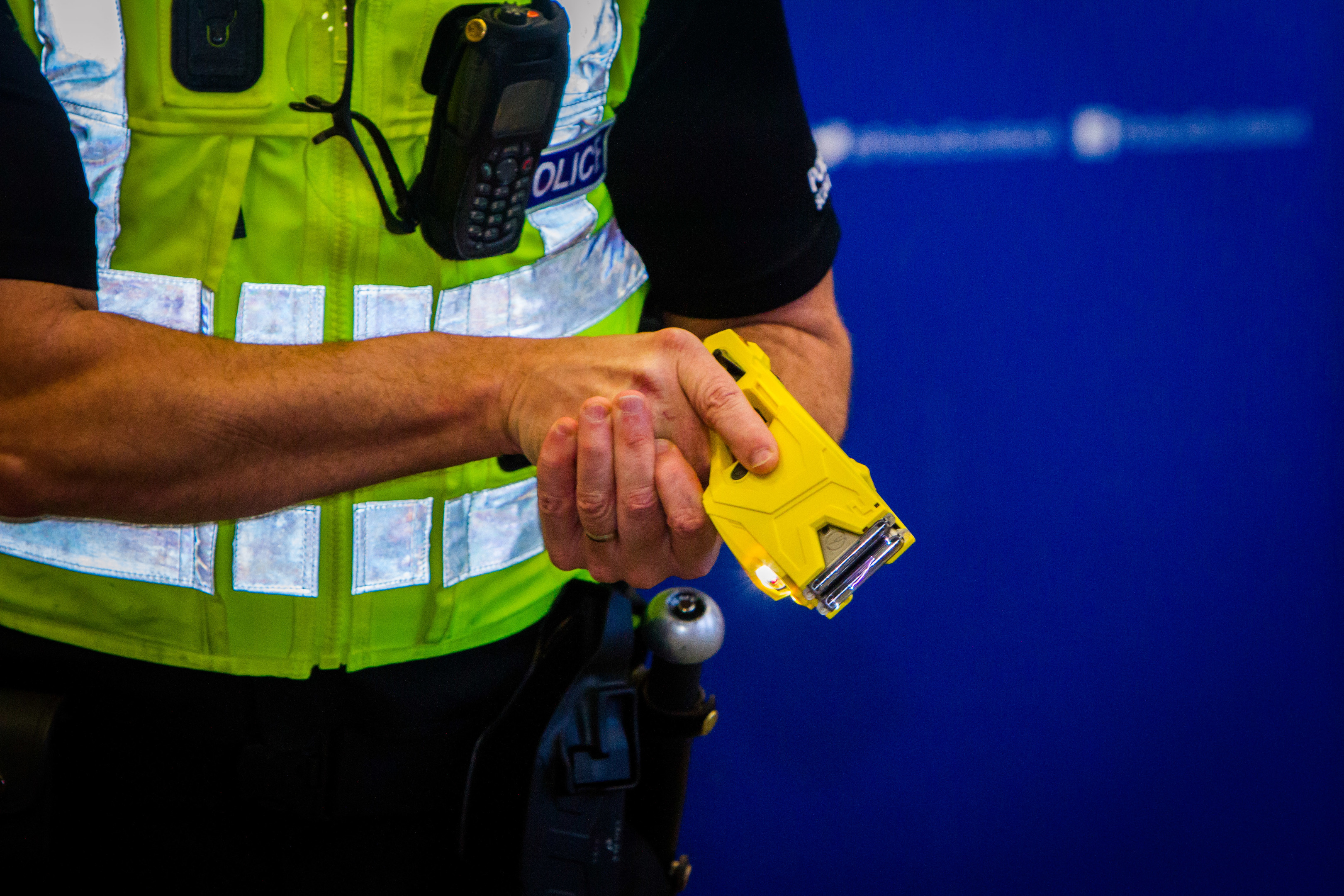
AN increase in the number of officers trained to use Tasers is not a “slippery slope” towards the universal arming of police, the Justice Secretary has said.
Michael Matheson told MSPs it was the government’s “clear intention” for Police Scotland to remain an unarmed police force with a specialist armed capability.
He was responding to concerns raised after the announcement last week that an extra 500 officers will be trained to use the Taser X2 and will be deployed in all 13 divisions across Scotland.
The force said the move was driven by an increase in the number of assaults on officers on duty, from 764 in 2016 to 969 so far in 2017.
The role of Armed Response Vehicle (ARV) officers is also to be extended to allow them to be deployed to more non-firearms calls.
Speaking in the Holyrood chamber, Liberal Democrat MSP Liam McArthur said: “For those of us that are worried that this policy is part of a slippery slope towards an enforcement model of policing, what assurances can the Cabinet Secretary provide that consideration will be given to scaling back the deployment of armed police and Tasers in the event that the threat to officers and the public reduces, that this isn’t just a one-way shift towards universal arming?”
Mr McArthur also questioned whether the Justice Secretary shared the concerns of Dr Nick McKerrell, a law lecturer at Glasgow Caledonian University, who suggested that the force was using a “vacuum of accountability” to increase its armed presence.
Mr Matheson said Police Scotland had been planning the change for months and the suggestion was “simply inaccurate and misleading”.
He said the move would ensure that ARVs could help local policing in cases where they would be able to respond to an incident more quickly than other officers.
Mr Matheson said: “This announcement does not involve an increase in firearms officers, it is the use of existing firearms officers who are presently only deployed to incidents which either involve a threat to life or to a firearms incident itself.
“However where the tactical firearms officer believes that they could be deployed to an incident where there’s particular vulnerability or where there is a need for speed and an ARV is available to respond to that quickly, then to be able to deploy them to that incident in order to deal with it at that particular point to support local policing.
“It does not involve an increase in firearms officers as such and the provision of the Taser specially-trained officers is to help to support both public protection and also officer protection because of the number of increasing incidents that they are experiencing where violence or a bladed instrument is being used, which clearly has a risk to police officers.
“It is this government’s clear intention that Police Scotland remains an unarmed police force but with a specialist armed capability that can be deployed as and when necessary, and that will continue to be the case with this change to its deployment model.”

Enjoy the convenience of having The Sunday Post delivered as a digital ePaper straight to your smartphone, tablet or computer.
Subscribe for only £5.49 a month and enjoy all the benefits of the printed paper as a digital replica.
Subscribe